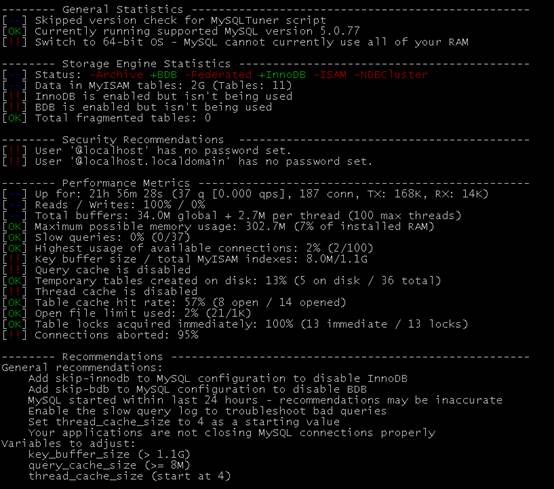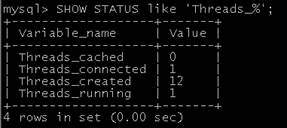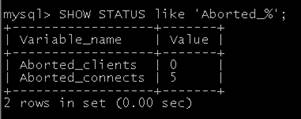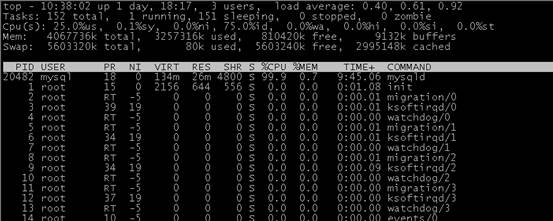Want to log script activity in your Web application, but have
no clue where to begin? Take our handy tour of PHP’s logging functions,
and find out how simple it really is.
I have to warn you not to be misled by the title of this article. It isn’t
really about cutting down trees with PHP.
I know that PHP is the Swiss
Army knife of Web scripting languages, but I don’t think its developers have
come up with a way to have it reduce our tree cover (at least not yet). Rather,
this article is about a different sort of logging – the sort which involves
writing messages to files or devices on a regular basis, and using these
messages to “do something useful”, be it generating a report or building an
audit trail for activity tracking.
Over the next few pages, I’m going to
take a quick look at the various mechanisms available to log script activity via
PHP, demonstrating both built-in functions and add-on classes that allow you to
add logging functionality to your applications. I’ll also spend some time on the
PHP functions and configuration options related to logging, demonstrating how,
for example, PHP errors can be sent to the Web server error log or emailed to an
administrator when they are over a particular priority level.
My primary
audience for this tutorial is the novice to intermediate PHP user – if you’re an
advanced user, you probably already know enough about logging with PHP, and
might prefer to skip the rest of this article in favour of more nutritious fare.
Everyone else – keep reading!{mospagebreak title=The Bare Necessities} Logging
data to a file in PHP can be as simple or as complex as you want to make it.
Break it down, though, and it all comes down to these three simple lines of
code:
<?php
// open file
$fd = fopen($filename, “a”);
// write string
fwrite($fd, $str . “n”);
// close file
fclose($fd);
?>
Fundamentally, logging data to a file consists of three
steps:
1. Open the target file (or create it if it doesn’t already
exist);
2. Append your data to the end of the file;
3. Close the
file.
You can encapsulate this as a function,
<?php
function logToFile($filename, $msg)
{
// open file
$fd = fopen($filename, “a”);
// write string
fwrite($fd, $msg . “n”);
// close file
fclose($fd);
}
?>
and then use it liberally within your code as and when
required.
<?php
function logToFile($filename, $msg)
{
// open file
$fd = fopen($filename, “a”);
// write string
fwrite($fd, $msg . “n”);
// close file
fclose($fd);
}
$v = “Mary had a little lamb”;
if (!is_numeric($v)) { logToFile(“my.log”, “Non-numeric variable
encountered”); }
$a = array(“chocolate”, “strawberry”, “peach”);
if (!in_array(‘fish’, $a)) { logToFile(“my.log”, “No fish available”); }
$conn = @mysql_connect(“localhost”, “joe”, “pass”);
if (!$conn)
{
logToFile(“my.log”, “Could not connect to database”);
die(“Could not connect to database”);
}
?>
You can make the function a little more professional by
having it automatically append the date and time of the log message to the log
file as well:
<?php
function logToFile($filename, $msg)
{
// open file
$fd = fopen($filename, “a”);
// append date/time to message
$str = “[" . date("Y/m/d h:i:s", mktime()) . "] ” . $msg;
// write string
fwrite($fd, $str . “n”);
// close file
fclose($fd);
}
?>
Here’s an example of the output:
[2002/11/25 06:02:42] Non-numeric variable encountered [2002/11/25
06:02:42] No fish available [2002/11/25 06:02:43] Could not connect to
database
{mospagebreak title=Turning The Tables} While the most common
destination for log data is a text file, it’s quite possible that you might want
to send your log messages elsewhere as well. A frequently-used alternative to a
text file, especially when the number of writes isn’t too high, is an SQL
database, where log messages are appended as records to the end of a table.
In order to illustrate this, consider the following example of an SQL
table used to store log messages:
CREATE TABLE `log`
(
`date` TIMESTAMP NOT NULL,
`type` TINYINT NOT NULL,
`msg` VARCHAR(255) NOT NULL
);
And here’s the rewritten logToDB() function, this time built
around PHP’s MySQL database functions and the table above:
function logToDB($msg, $type)
{
// open connection to database
$connection = mysql_connect(“localhost”, “joe”, “pass”) or die
(“Unable to connect!”);
mysql_select_db(“logdb”) or die (“Unable to select database!”);
// formulate and execute query
$query = “INSERT INTO log (date, type, msg) VALUES(NOW(),
‘$type’, ‘$msg’)”;
mysql_query($query) or die (“Error in query: $query. ” .
mysql_error());
// close connection
mysql_close($connection);
}
$a = array(“chocolate”, “strawberry”, “peach”);
if (!in_array(‘fish’, $a)) { logToDB(“No fish available”, 14); }
If you don’t estimate seeing a very large number of writes,
using a database to store logs can offer significant advantages over a regular
file, purely from the point of view of easier retrieval and sorting. Storing log
messages in this manner makes it possible to easily retrieve ordered subsets of
the log data, either by date or message type.
Another option might be to
send log messages to a specified email address via PHP’s mail() function – for
example, alerting a sysop whenever a script encounters errors. Here’s an
example:
function logToMail($msg, $address)
{
// append date/time to message
$str = “[" . date("Y/m/d h:i:s", mktime()) . "] ” . $msg;
mail($address, “Log message”, $str);
}
$conn = @mysql_connect(“localhost”, “joe”, “pass”);
if (!$conn) { logToMail(“Could not connect to database”,
“webmaster@my.domain.name.com”); }
{mospagebreak title=Turning Up The Heat} If the thought of
rolling your own code doesn’t appeal to you, you can also use PHP’s built-in
error_log() function, which logs data both to a file and elsewhere. The
error_log() function needs a minimum of two arguments: the error message to be
logged, and an integer indicating where the message should be sent. There are
three possible integer values in PHP 4.x:
0 – send the message to the
system logger (“syslogd” on *NIX, and the Event Log on Windows NT);
1 –
send the message to the specified email address;
3 – send the message to
the specified file;
Here’s a trivial example which demonstrates how this
works:
<?php
// set a variable
$temp = 101.6;
// test it and log an error
// this will only work if
// you have “log_errors” and “error_log” set in your php.ini file if
($temp > 98.6) {
error_log(“Body temperature above normal.”, 0);
}
?>
Now, if you look at the system log file after running the
script, you’ll see something like this:
[28-Feb-2002 15:50:49] Body temperature above normal.
You can also write the error message to a file,
<?php
// set a variable
$temp = 101.6;
// test it and log an error
if ($temp > 98.6)
{
error_log(“Body temperature above normal.”, 3, “a.out”);
}
?>
or send it out as email.
<?php
// set a variable
$temp = 101.6;
// test it and log an error
if ($temp > 98.6)
{
error_log(“Body temperature above normal.”, 1,
“administrator@this.body.com”); }
?>
It’s possible to combine this error logging facility with a
custom error handler to ensure that all script errors get logged to a file.
Here’s an example which demonstrates this:
<?php
// custom handler
function eh($type, $msg, $file, $line)
{
// log all errors
error_log(“$msg (error type $type)”, 0);
// if fatal error, die()
if ($type == E_USER_ERROR)
{
die($msg);
}
}
// report all errors
error_reporting(E_ALL);
// define custom handler
set_error_handler(“eh”);
// let’s now write some bad code
// this will trigger a warning, since the file doesn’t exist
include(“common.php”); ?>
And here’s the output that gets logged to the system log
file:
[28-Feb-2002 16:15:06] Failed opening ‘common.php’ for inclusion
(include_path=’.;’) (error type 2)
{mospagebreak title=Biting Into A PEAR} As if all that wasn’t
enough, PHP offers one more alternative – a special Log class that comes
courtesy of PEAR, the PHP Extension and Application Repository
(http://pear.php.net). In case you didn’t know, PEAR is an online repository of
free PHP software, including classes and modules for everything from data
archiving to XML parsing. This Log class is maintained by Jon Parise, and the
latest version can be downloaded from
http://pear.php.net/package-info.php?package=Log
Like the error_log()
function, the PEAR Log class allows logging to a variety of different
destinations – system logger, text file, email address, database and even MCAL.
Here’s an example demonstrating basic usage:
<?php
// include class
include(“Log.php”);
// create Log object
$l = &Log::singleton(“file”, “my.log”);
// test it
$v = “Mary had a little lamb”;
if (!is_numeric($v)) { $l->log(“Non-numeric variable encountered”,
PEAR_LOG_WARNING); }
$a = array(“chocolate”, “strawberry”, “peach”);
if (!in_array(‘fish’, $a)) { $l->log(“No fish available”, PEAR_LOG_ERR);
}
$conn = @mysql_connect(“localhost”, “joe”, “pass”);
if (!$conn) { $l->log(“Could not connect to database”, PEAR_LOG_CRIT);
}
?>
The first step here is to include() the Log class:
// include class
include(“Log.php”);
Once that’s done, a new Log object can be created. This
object constructor requires, as its first parameter, a string indicating the
kind of log to open – current valid values are ‘console’, ‘syslog’, ‘sql’,
‘file’, and ‘mcal’. Depending on the log type, additional data may be provided –
the name of the file to use in case of a file logger, for example.
// create Log object
$l = &Log::singleton(“file”, “my.log”);
The Log class internally defines eight priority levels for
logging – here’s the list, culled directly from the source code of the class:
$priorities = array(
PEAR_LOG_EMERG => ‘emergency’,
PEAR_LOG_ALERT => ‘alert’,
PEAR_LOG_CRIT => ‘critical’,
PEAR_LOG_ERR => ‘error’,
PEAR_LOG_WARNING => ‘warning’,
PEAR_LOG_NOTICE => ‘notice’,
PEAR_LOG_INFO => ‘info’,
PEAR_LOG_DEBUG => ‘debug’
);
Each log message that you send to the logger can be flagged
with a specific priority, and the logger can be set up to log only those
messages matching or exceeding a specific priority level (by default, all
messages are logged). This can be clearly seen from the test code below, in
which each message to the logger includes a priority level:
$v = “Mary had a little lamb”;
if (!is_numeric($v)) { $l->log(“Non-numeric variable encountered”,
PEAR_LOG_WARNING); }
$a = array(“chocolate”, “strawberry”, “peach”);
if (!in_array(‘fish’, $a)) { $l->log(“No fish available”, PEAR_LOG_ERR);
}
$conn = @mysql_connect(“localhost”, “joe”, “pass”);
if (!$conn) { $l->log(“Could not connect to database”, PEAR_LOG_CRIT);
}
Here’s what the log file looks like:
Nov 26 06:47:15 [warning] Non-numeric variable encountered
Nov 26 06:47:15 [error] No fish available
Nov 26 06:47:17 [critical] Could not connect to database
If you’d like to tell the logger to only log messages above a
certain priority level – for example, critical and above – this priority level
should be specified as the fifth argument to the object constructor. Consider
the following revision of the previous example:
<?php
// include class
include(“Log.php”);
// create Log object
$l = &Log::singleton(“file”, “my.log”, NULL, array(), PEAR_LOG_ERR);
// test it
$v = “Mary had a little lamb”;
if (!is_numeric($v)) { $l->log(“Non-numeric variable encountered”,
PEAR_LOG_WARNING); }
$a = array(“chocolate”, “strawberry”, “peach”);
if (!in_array(‘fish’, $a)) { $l->log(“No fish available”, PEAR_LOG_ERR);
}
$conn = @mysql_connect(“localhost”, “joe”, “pass”);
if (!$conn) { $l->log(“Could not connect to database”, PEAR_LOG_CRIT);
}
?>
In this case,
only messages flagged as PEAR_LOG_ERR and above
will be written to the specified log file.{mospagebreak
title=Destination Unknown} The Log class also supports sending log
messages to the console, the
system logger, an SQL database or a user-specified email address. Take a
look:
<?php
// include class
include(“Log.php”);
// create Log object
$l = &Log::singleton(“console”);
// test it
$v = “Mary had a little lamb”;
if (!is_numeric($v)) { $l->log(“Non-numeric variable encountered”,
PEAR_LOG_WARNING); }
$a = array(“chocolate”, “strawberry”, “peach”);
if (!in_array(‘fish’, $a)) { $l->log(“No fish available”, PEAR_LOG_ERR);
}
$conn = @mysql_connect(“localhost”, “joe”, “pass”);
if (!$conn) { $l->log(“Could not connect to database”, PEAR_LOG_CRIT);
}
?>
In this case, log messages are directed to the text console
(if you’re running this script via a Web server, the console is the browser
window). Here’s the output:
Nov 26 22:05:25 [warning] Non-numeric variable encountered
Nov 26 22:05:25 [error] No fish available
Nov 26 22:05:27 [critical] Could not connect to database
Messages can also be sent to an SQL database,
<?php
// include class
include(“Log.php”);
// create Log object
// second argument is table name
// fourth argument is PHP::DB compatible DSN for database access $l =
&Log::singleton(“sql”, “log_table”, “”, array(‘dsn’ =>
‘mysql://joe:pass@localhost/test’));
// test it
$v = “Mary had a little lamb”;
if (!is_numeric($v)) { $l->log(“Non-numeric variable encountered”,
PEAR_LOG_WARNING); }
$a = array(“chocolate”, “strawberry”, “peach”);
if (!in_array(‘fish’, $a)) { $l->log(“No fish available”, PEAR_LOG_ERR);
}
$conn = @mysql_connect(“localhost”, “joe”, “pass”);
if (!$conn) { $l->log(“Could not connect to database”, PEAR_LOG_CRIT);
}
?>
which can then be queried to retrieve subsets of the log
messages, sorted by date or priority level.
mysql> SELECT * FROM log_table WHERE priority >= 4;
+—————-+——-+———-+———————————-+
| logtime | ident | priority | message |
+—————-+——-+———-+———————————-+
| 20021126074936 | | 4 | Non-numeric variable encountered |
| 20021126074936 | | 4 | Non-numeric variable encountered |
| 20021126074937 | | 4 | Non-numeric variable encountered |
+—————-+——-+———-+———————————-+
3 rows in set (0.05 sec)
Finally, log messages can also be directed to a specified
email address, as in the following example:
<?php
// include class
include(“Log.php”);
// create Log object
$l = &Log::singleton(“mail”, “admin@host.com”);
// test it
$v = “Mary had a little lamb”;
if (!is_numeric($v)) { $l->log(“Non-numeric variable encountered”,
PEAR_LOG_WARNING); }
$a = array(“chocolate”, “strawberry”, “peach”);
if (!in_array(‘fish’, $a)) { $l->log(“No fish available”, PEAR_LOG_ERR);
}
$conn = @mysql_connect(“localhost”, “joe”, “pass”);
if (!$conn) { $l->log(“Could not connect to database”, PEAR_LOG_CRIT);
}
?>
You can customize the mail message by adding an array
containing a custom From: and Subject: line to the object constructor, as below:
<?php
// include class
include(“Log.php”);
// create Log object
$l = &Log::singleton(“mail”, “admin@host.com”, NULL, array(‘from’ => ‘L.
Ogger’, ‘subject’ => ‘Log message’));
// test it
$v = “Mary had a little lamb”;
if (!is_numeric($v)) { $l->log(“Non-numeric variable encountered”,
PEAR_LOG_WARNING); }
$a = array(“chocolate”, “strawberry”, “peach”);
if (!in_array(‘fish’, $a)) { $l->log(“No fish available”, PEAR_LOG_ERR);
}
$conn = @mysql_connect(“localhost”, “joe”, “pass”);
if (!$conn) { $l->log(“Could not connect to database”, PEAR_LOG_CRIT);
}
?>
{mospagebreak title=Artificial Intelligence} You can also
configure PHP to automatically log all script errors to a specific file via the
special “log_errors” configuration directive in “php.ini”. This directive, when
set to true, logs all PHP errors to either a user-specified log file (the value
of this file must be specified in the “error_log” configuration directive, also
set via “php.ini”), or to the Web server error log if no log file is
specified.
Consider the following example, which demonstrates:
<?php
// turn on automatic error logging
ini_set(‘log_errors’, true);
// include non-existent file
include(“non.existent.file.php”);
?>
In this case, I’m manually instantiating an error by
attempting to include a file which does not exist. Obviously, PHP will barf and
display an error screen containing the following:
Warning: Failed opening ‘non.existent.file.php’ for inclusion
(include_path=’.;/usr/local/php/includes’) in error.php on line 10
The same error also appears in the server’s error log:
[Tue Nov 26 12:49:31 2002] [error] PHP Warning: Failed opening
‘non.existent.file.php’ for inclusion
(include_path=’.;/usr/local/php/includes’) in error.php on line 10
You can turn off PHP error display, and only have the error
message appear in the log file, by setting the “display_errors” variable (also
accessible via “php.ini”) to false. Consider the following variant of the
previous example, which demonstrates:
<?php
// turn on automatic error logging
ini_set(‘log_errors’, true);
// turn off error display
ini_set(‘display_errors’, false);
// include non-existent file
include(“non.existent.file.php”);
?>
In this case, though an error takes place, it is never
displayed to the user, but merely gets logged to the server’s error
log.
On *NIX systems, setting the “error_log” variable to the
special
value “syslog” logs all errors via the standard “syslog”
daemon.{mospagebreak title=Big Brother Is Watching} Finally, let’s wrap
things up with a couple of
examples that show how the various techniques demonstrated above can be
used to
build logs and audit trails for a Web application.
In the first example,
every time a Web page is displayed, a log entry is made in an “access.log” file.
This log entry is a comma-separated list of values containing the URL requested,
the client browser identification string, and a timestamp.
<?php
// create log string
$str = date(“Y/m/d h:i:s”, mktime()) . “,” . $_SERVER['REQUEST_URI'] .
“,” . $_SERVER['HTTP_USER_AGENT'] . “n”;
// write to file
error_log($str, 3, “access.log”);
// rest of page here
?>
Here’s a snippet from the access log:
2002/11/26 09:07:38,/alpha.php,Mozilla/4.0 (compatible; MSIE 5.0;
Windows 95) 2002/11/26 09:07:38,/alpha.php,Mozilla/4.0 (compatible; MSIE
5.0; Windows 95) 2002/11/26 09:10:31,/home/hello.php,Mozilla/4.0
(compatible; MSIE 5.0; Windows 95) 2002/11/26
09:17:38,/index.php,Mozilla/4.0 (compatible; MSIE 5.0; Windows 95)
2002/11/26 09:17:38,/base/index.php,Mozilla/4.0 (compatible; MSIE 5.0;
Windows 95)
Since this data is in a structured format, it can easily be
analyzed and a “hit count” created for each URL in the file. This next script
does exactly that:
<?php
// create array to hold unique URLs
$urlStats = array();
// read access log
$lines = file(“access.log”);
// iterate through access log
foreach ($lines as $l)
{
$data = explode(“,”, $l);
$ts = $data[0];
$url = $data[1];
$agent = $data[2];
// check to see if URL exists in array
// if it does, increment incidence count
// if it does not, create a new key with incidence count 1
if ($urlStats[$url])
{
$urlStats[$url]++;
}
else
{
$urlStats[$url] = 1;
}
}
// print list of unique URLs with count
print_r($urlStats);
?>
This script parses the “access.log” file, and creates a PHP
associative array whose keys correspond to the URLs found in the file. The value
associated with each key is an integer indicating the number of appearances the
URL makes in the file. Once the entire file has been parsed, the $urlStats array
contains a list of all the unique URLs in the access log, together with the
number of times each has appeared. This data can then be used to generate a
report of the most frequently-accessed URLs.
Consider this next example,
which provides an API for adding, editing and deleting users to (from) a Web
application. Each time the user database is edited, a separate audit() process
tracks the change, logging both the nature of the change and information about
the user initiating the change. This log data is stored in a separate SQL table,
from where it can be retrieved for statistical reporting, user activity
monitoring or debugging.
<?php
// assume that administrator has logged in to system to perform
user-administration tasks // admin username is stored in a session
variable by default // this is useful for audit purposes
session_start(); $_SESSION['LOGGED_IN_USER'] = “john”;
// add a new user
function addUser($user, $pass, $perms)
{
// open connection to database
$connection = mysql_connect(“localhost”, “joe”, “pass”) or die
(“Unable to connect!”);
mysql_select_db(“myapp”) or die (“Unable to select database!”);
// formulate and execute query
$query = “INSERT INTO users (user, pass, perms) VALUES(‘$user’,
‘$pass’, ‘$perms’)”;
mysql_query($query) or die (“Error in query: $query. ” .
mysql_error());
// log activity to audit database
audit(“ADD_USER”, $_SESSION['LOGGED_IN_USER'],
“$user:$pass:$perms”, addslashes($query));
// close connection
mysql_close($connection);
}
// edit an existing user
function updateUser($user, $pass, $perms)
{
$connection = mysql_connect(“localhost”, “joe”, “pass”) or die
(“Unable to connect!”);
mysql_select_db(“myapp”) or die (“Unable to select database!”);
// formulate and execute query
$query = “UPDATE users SET pass = ‘$pass’, perms = ‘$perms’
WHERE user = ‘$user’”;
mysql_query($query) or die (“Error in query: $query. ” .
mysql_error());
// log activity to audit database
audit(“UPDATE_USER”, $_SESSION['LOGGED_IN_USER'],
“$user:$pass:$perms”, addslashes($query));
// close connection
mysql_close($connection);
}
// delete an existing user
function deleteUser($user)
{
$connection = mysql_connect(“localhost”, “joe”, “pass”) or die
(“Unable to connect!”);
mysql_select_db(“myapp”) or die (“Unable to select database!”);
// formulate and execute query
$query = “DELETE FROM users WHERE user = ‘$user’”;
mysql_query($query) or die (“Error in query: $query. ” .
mysql_error());
// log activity to audit database
audit(“DELETE_USER”, $_SESSION['LOGGED_IN_USER'], “$user”,
addslashes($query));
// close connection
mysql_close($connection);
}
// generic audit function
// logs all activity to a database
function audit($op, $owner, $args, $msg)
{
$connection = mysql_connect(“localhost”, “root”, “pass”) or die
(“Unable to connect!”);
mysql_select_db(“trails”) or die (“Unable to select database!”);
// formulate and execute query
$query = “INSERT INTO audit (timestamp, op, owner, args, msg)
VALUES (NOW(), ‘$op’, ‘$owner’, ‘$args’, ‘$msg’)”;
mysql_query($query) or die (“Error in query: $query. ” .
mysql_error());
}
addUser(“joe”, “joe”, 3);
addUser(“sarahh”, “bsdfg49″, 1);
updateUser(“joe”, “joe”, 4);
deleteUser(“sarahh”);
addUser(“sarah”, “bsdfg49″, 1);
?>
Here’s a snippet from the audit table:
+———————+————-+——-+
| timestamp | op | owner |
+———————+————-+——-+
| 2002-11-26 08:28:05 | UPDATE_USER | john |
| 2002-11-26 08:28:05 | DELETE_USER | john |
| 2002-11-26 08:28:05 | ADD_USER | john |
| 2002-11-26 08:33:14 | ADD_USER | joe |
+———————+————-+——-+
This audit table can then be queried to obtain detailed
information on the activities performed by the various users, sorted by time or
type of activity. For example,
mysql> SELECT timestamp, op, args FROM trails WHERE timestamp >=
mysql> 2002-11-26
AND owner = ‘joe’;
+———————+————-+——————+
| timestamp | op | args |
+———————+————-+——————+
| 2002-11-26 08:33:29 | ADD_USER | joe:joe:3 |
| 2002-11-26 08:33:29 | ADD_USER | sarahh:bsdfg49:1 |
| 2002-11-26 08:33:29 | UPDATE_USER | joe:joe:4 |
| 2002-11-26 08:33:29 | DELETE_USER | sarahh |
| 2002-11-26 08:33:29 | ADD_USER | sarah:bsdfg49:1 |
+———————+————-+——————+
This is a somewhat trivial example, but it serves to
demonstrate the concept of logging activity and using those logs to build an
audit trail. While you can make this as complex as you want, tracking everything
from user clicks to form input in order to gain a better understanding of how
users navigate through and use your application, remember that every addition to
the log affects the overall performance of your application; log too much data
and your application will suffocate and die.{mospagebreak title=Closing Time}
And that’s about it for the moment. In this article, I offered you a brief
overview of logging in PHP, demonstrating how you can use built-in functions,
off-the-shelf libraries or your own code to easily and efficiently create logs
of the activity taking place in your application. I demonstrated logging to a
file, to a database, to an email address and to the console, and wrapped things
up with a couple of simple examples that demonstrated how logs could be built
and analyzed in a real-world application.
I hope you enjoyed reading this
article as much as I enjoyed writing it. If you’d like to know more about the
topics discussed in the previous pages, here are some links you should
bookmark:
PHP file manipulation functions, at
http://www.php.net/manual/en/ref.filesystem.phpPHP
mail functions, at
http://www.php.net/manual/en/ref.mail.phpPHP
MySQL functions, at
http://www.php.net/manual/en/ref.mysql.phpPHP
error logging functions, at
http://www.php.net/manual/en/ref.errorfunc.phpThe
PHP Log class, at
http://pear.php.net/package-info.php?package=LogPEAR,
at
http://pear.php.netTill next
time…stay healthy!
Note: All examples in this article have been tested
on Linux/i586 with PHP 4.2.3. Examples are illustrative only, and are not meant
for a production environment. Melonfire provides no warranties or support for
the source code described in this article. YMMV!

,is_null%28%29,isset%E7%89%B9%E6%AE%8A%E5%88%A4%E6%96%B7%E7%B5%90%E6%9E%9C%E5%88%97%E8%A1%A8.jpg)


























